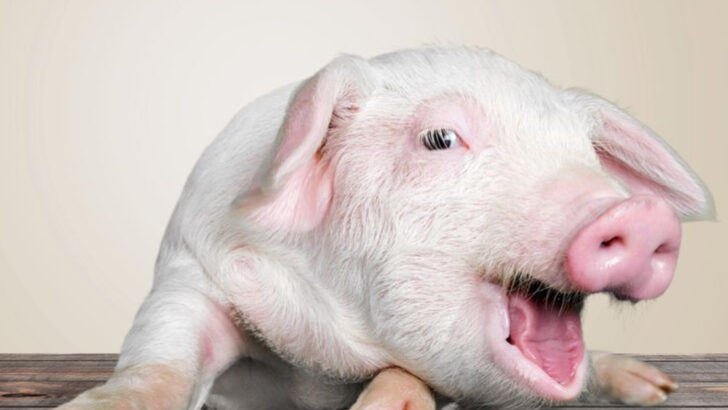You’re not as unique as you think.
Sure, you walk on two legs and file your taxes—but deep down, you’ve got more in common with a chimpanzee than you might be comfortable admitting.
In fact, humans share a staggering amount of DNA with animals all across the tree of life. Some of these genetic cousins are easy to guess. Others will leave you staring at your cat with a whole new level of respect.
From primates with familiar expressions to unexpected creatures that mirror our biology, this list of 14 animals will make you rethink where the human story really begins—and who we’re still sharing it with.
Chimpanzee

Chimpanzees are our closest living relatives, sharing about 98.7% of our DNA. Their social structures and complex emotional expressions mirror those of humans.
Observing chimpanzees in their natural habitats reveals behaviors like problem-solving and tool use, reminiscent of early human ancestors. These intelligent primates exhibit a sense of community and empathy. Often seen grooming each other, they strengthen bonds within their groups.
Chimpanzees communicate through vocalizations, facial expressions, and gestures, highlighting their intricate social lives. They provide valuable insights into human evolution, offering a glimpse into our own past through the lens of their behavior.
Bonobo

Bonobos, like chimpanzees, share about 98.7% of human DNA, but are often known for their matriarchal societies. These gentle primates are celebrated for their peaceful and cooperative social interactions.
Unlike other primates, bonobos resolve conflicts with affectionate behaviors, creating a harmonious environment. Their playful nature and intimate connections are captivating, as they engage in grooming and social bonding activities.
Bonobos’ expressive faces and body language mirror human emotions, making them a fascinating study for understanding empathy and cooperation in social groups. Their unique societal structures offer insights into alternative evolutionary paths.
Gorilla
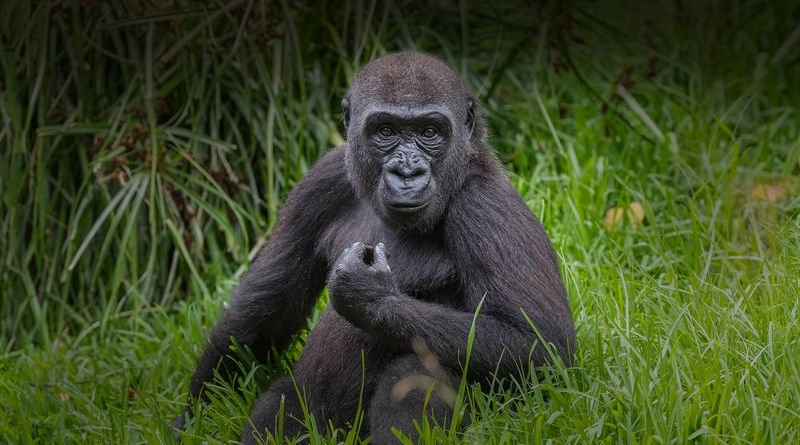
Gorillas share approximately 98.3% of DNA with humans, making them one of our closest genetic relatives. Known for their immense strength, gorillas also display a surprising tenderness, especially family-oriented behavior.
These gentle giants live in close-knit groups led by a dominant silverback male. Gorillas communicate through vocalizations, expressions, and even chest beats, displaying a range of emotions.
Observing their interactions offers a window into the depth of their social relationships. Their nurturing behavior towards offspring and peaceful demeanor often challenge the stereotype of these majestic creatures as fierce beasts.
Orangutan
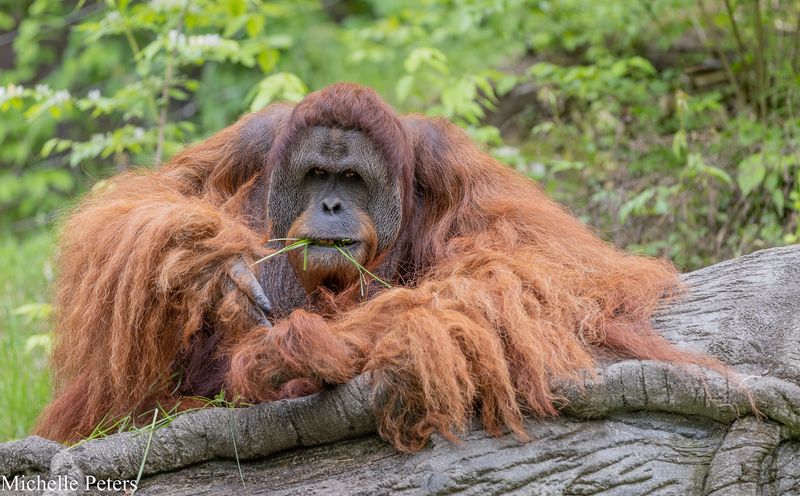
Orangutans share about 97% of human DNA, living solitary lives within the lush rainforests of Borneo and Sumatra. Known for their intelligence and problem-solving skills, these great apes are often seen using tools in their natural environment.
Orangutans have complex facial expressions and vocalizations, conveying emotions similar to those in humans. Their long arms and arboreal lifestyle enable them to navigate the forest canopy with ease, highlighting their adaptations to a life above the ground.
Studying orangutans provides insights into the evolution of intelligence and social behavior among primates.
Rhesus Macaque
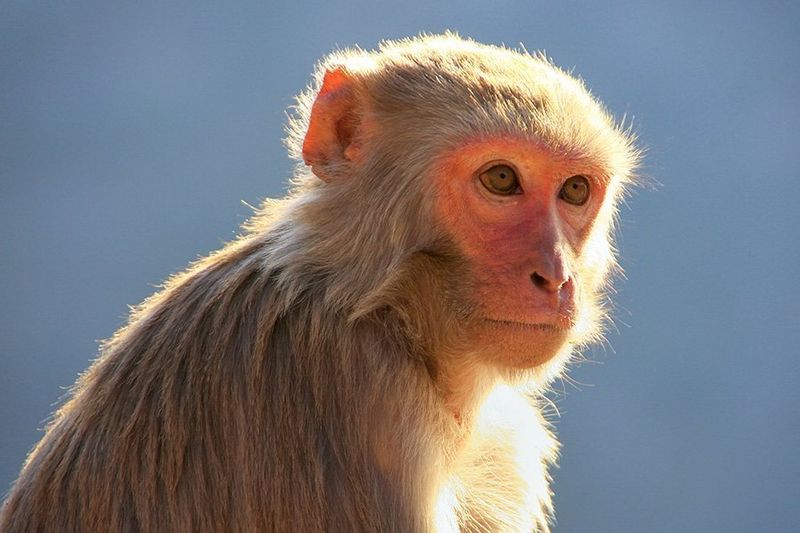
Rhesus macaques share about 93% of their DNA with humans and are known for their adaptability to diverse environments. Often found in both rural and urban areas, these intelligent monkeys exhibit behaviors that reflect human ingenuity.
Their complex social structures and communication methods, including vocalizations and facial expressions, reveal a rich emotional life. Rhesus macaques are frequently used in scientific research due to their genetic similarities to humans, providing valuable insights into health and disease.
Their curious nature and ability to thrive in various habitats make them a remarkable example of evolutionary success.
Mouse

Mice share approximately 85% of their DNA with humans, making them indispensable in genetic research. These small mammals are vital in studying human diseases and testing new treatments.
Known for their adaptability, mice have been bred in laboratories to model a wide range of human conditions, from cancer to neurological disorders. Their rapid breeding cycle and genetic malleability allow researchers to conduct extensive experiments.
Beyond their scientific importance, mice display behaviors such as nest-building and social interaction, offering insights into mammalian behavior. These tiny creatures bridge the gap between human biology and experimental science.
Zebrafish
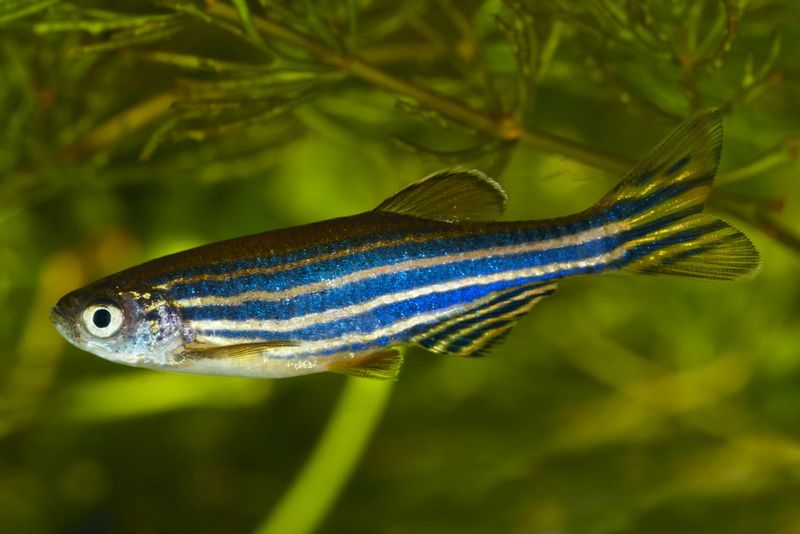
Zebrafish share about 70% of DNA with humans, providing a unique insight into vertebrate development. With their transparent embryos, zebrafish are invaluable in developmental biology and genetic research.
Scientists can observe organ development and genetic changes in real time, offering a clearer understanding of human diseases. These small, brightly colored fish are also used to study regeneration and healing processes.
Their rapid growth and genetic similarities bridge the aquatic and terrestrial worlds, enhancing our knowledge of evolutionary biology. The humble zebrafish continues to illuminate the intricate processes that underpin life.
Chicken
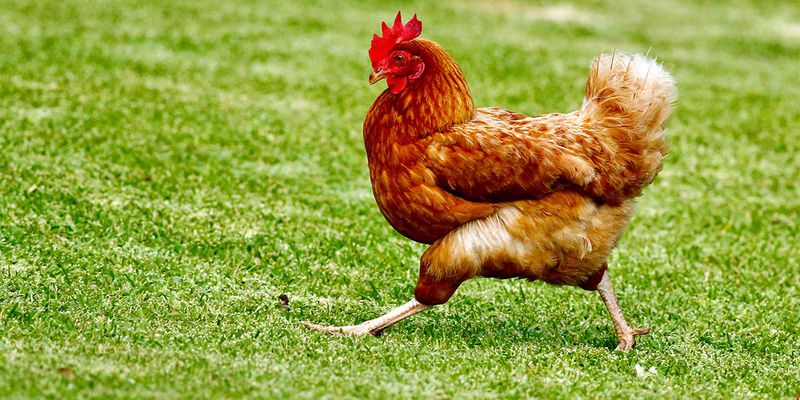
Chickens share about 60% of their DNA with humans, playing a crucial role in genetic and agricultural studies. As a model organism, chickens help researchers understand embryonic development and evolutionary pathways.
Their diverse breeds and adaptability make them a staple in farming worldwide. Scientists study chickens to explore genetic traits, such as disease resistance and physical characteristics.
Beyond their agricultural importance, chickens exhibit intriguing social behaviors and communication. Understanding the genetic similarities between chickens and humans offers insights into vertebrate evolution and the development of complex life forms.
Fruit Fly
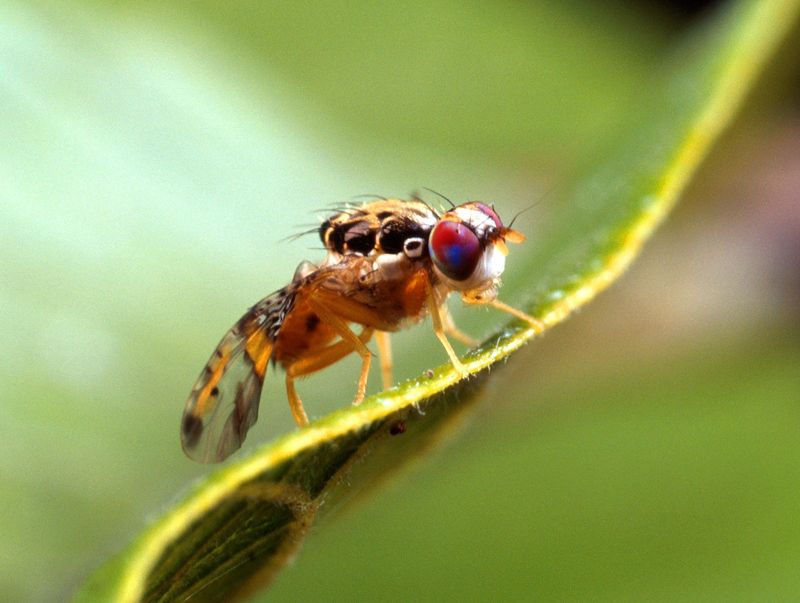
Fruit flies, or Drosophila, share about 60% of their DNA with humans. Despite their tiny size, they play a monumental role in genetics, serving as model organisms for over a century.
Scientists use fruit flies to study inheritance patterns, genetic mutations, and developmental processes. Their rapid life cycle and ease of breeding make them ideal for laboratory research. Observations of fruit fly behavior provide insights into neural functions and genetic control.
These unassuming insects have contributed significantly to our understanding of fundamental biological processes, from genetics to neuroscience, proving that size doesn’t determine impact.
Pig

Pigs share about 98% of their DNA with humans, making them remarkably similar in terms of physiology and organ structure. This genetic closeness is why pigs are often used in medical research, particularly in studying organ transplants and disease models.
Pigs are known for their intelligence and social behavior, often forming strong bonds with humans and other pigs. Their playful and curious nature makes them endearing farm animals.
Understanding pig genetics helps enhance agricultural practices and improve animal welfare. These intelligent creatures continue to advance our knowledge of biology and medicine.
Cat

Cats share about 90% of their DNA with humans, reflecting remarkable genetic similarities despite their independent nature. These beloved pets display a wide range of vocalizations and body language, communicating effectively with humans and other animals.
Their keen senses and agile movements are a testament to their evolutionary adaptations as hunters. Cats’ genetic makeup has been extensively studied to understand diseases and developmental processes.
Beyond their scientific significance, they bring joy and companionship to countless households. Exploring the genetic ties between cats and humans offers insights into the shared traits that unite us.
Dog

Dogs share about 84% of their DNA with humans, and their role as companions is celebrated worldwide. Known for their loyalty and intelligence, dogs have been bred for various roles, from herding to providing emotional support.
Their ability to understand human commands and emotions highlights a deep, evolutionary bond. Dogs’ social nature and adaptability make them ideal partners in research exploring behavior and genetics.
Whether working alongside us or curled up at home, dogs enhance our lives with their playful energy and unconditional love. Their genetic similarities continue to be a subject of fascination and study.
Elephant

Elephants share about 98% of their DNA with humans, showcasing complex social structures and emotional depth. These majestic creatures are known for their intelligence, memory, and strong family bonds.
Elephants communicate through vocalizations and body language, demonstrating empathy and cooperation within their herds. Their ability to use tools and solve problems highlights cognitive abilities akin to humans. Conservation efforts focus on protecting their natural habitats and understanding their behavior and genetics.
The profound genetic connection between elephants and humans offers insights into social evolution and environmental adaptation, enriching our appreciation of these gentle giants.
Dolphin

Dolphins share approximately 98% of their DNA with humans, renowned for their playful nature and intelligence. These marine mammals form intricate social structures and communicate using a complex system of clicks and whistles.
Observations of dolphins reveal behaviors such as problem-solving and cooperation, often working together to hunt or play. Their ability to learn and mimic actions highlights cognitive parallels with humans.
Dolphins’ genetic similarities are studied to understand marine biology and conservation strategies. Captivating audiences worldwide, dolphins inspire curiosity and wonder, reminding us of the interconnectedness of life beneath the waves.

